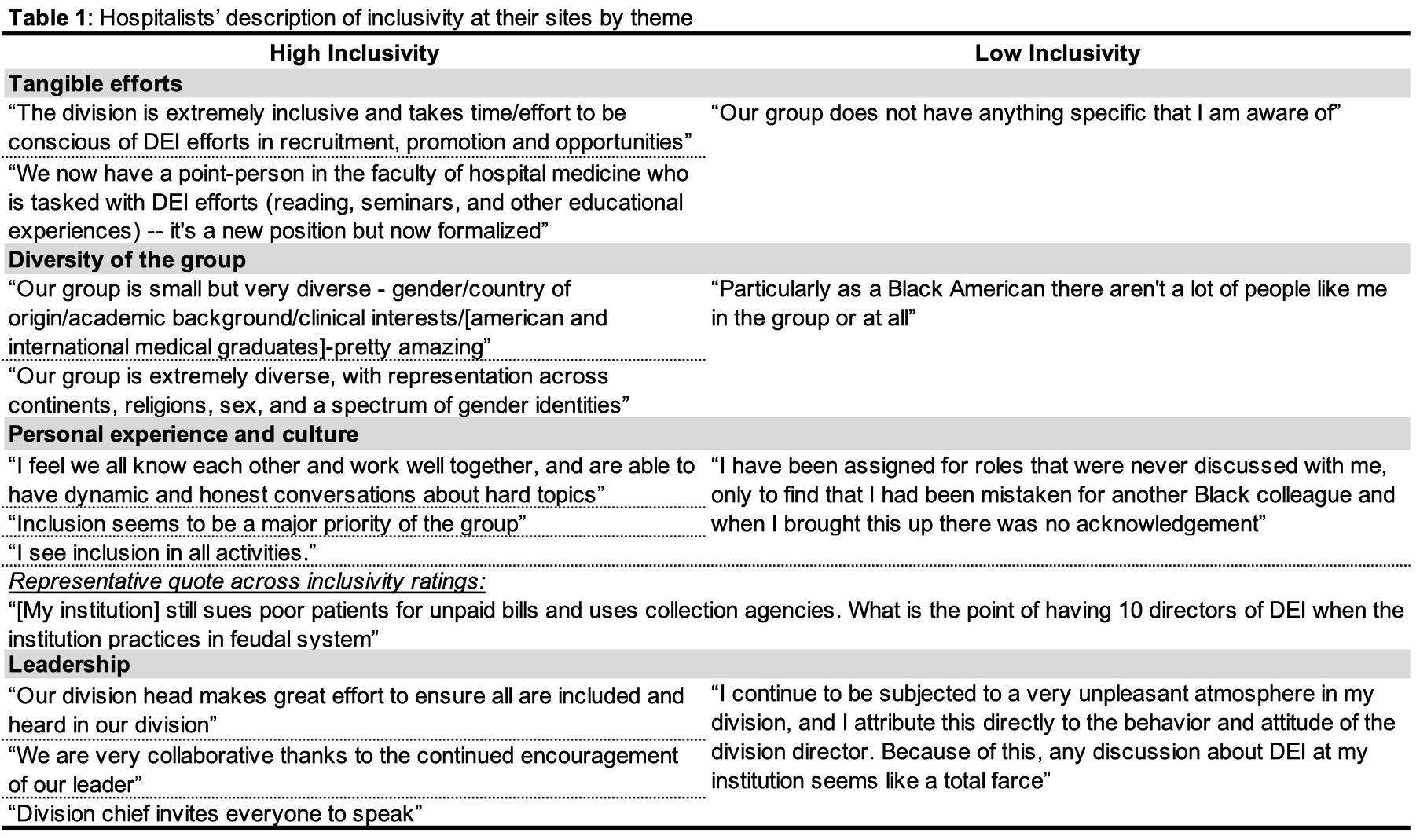Background: As hospitalists often serve marginalized patients and have system-wide influence, hospital medicine is well positioned for promoting diversity, equity, inclusion, and justice (DEIJ). While representational diversity may be tracked, inclusion can be harder to assess. As hospitalists engage in DEIJ efforts, it is important to understand what ‘success’ in inclusion looks like. We sought to describe clinicians’ perspectives about what constitutes an inclusive work environment.
Methods: We conducted a rapid thematic analysis from open-ended questions of a cross-sectional electronic survey study examining DEIJ efforts in US hospital medicine groups. Surveys were distributed to hospitalists from sites participating in HOMERuN (a US hospital medicine research and quality improvement collaborative) in May 2021. Respondents were first asked to rate how much their group currently fosters a sense of belonging/inclusivity, and then asked to elaborate. These responses were summarized in a matrix, stratified by rating to allow for evaluation of themes and trends by high inclusivity (HI) (extremely or moderately inclusive) and low inclusivity (LI) (somewhat or not at all inclusive).
Results: Of the 436 respondents, 332 (76.5%) rated their site as ‘extremely’ or ‘moderately’ inclusive, 70 (16%) described their sites as ‘somewhat’ inclusive while 32 (7.4%) perceived their site as being ‘not at all’ inclusive. 139 (32%) responded to the open-ended questions. Four themes emerged (Table 1).Tangible efforts: Respondents who rated their groups as being HI described multifaceted interventions like intentional recruitment processes, DEIJ education, and prioritization of funded DEIJ positions and program development. Such comments were absent in those rating their sites as having LI.Diversity of the group:Participants rating their sites as HI described diversity in terms of race, ethnicity, gender, and sexuality among members of their hospitalist group or efforts to achieve diversity. Conversely, respondents rating their sites as LI called out the lack of diversity within their ranks and/or in their leadership.Personal experience and culture:When rating their sites as being inclusive, respondents described a work environment that felt welcoming to all and an environment that invited DEIJ dialogue. Efforts to further DEIJ were described as ‘valued’. Those with poorer ratings described hierarchical structures, instances of overt discrimination, and hypocritical attempts at promoting DEIJ. Regardless of rating, respondents described concerns about DEIJ issues related to patient care.Leadership:The role of the leadership was described as meaningfully contributing towards an inclusive culture by inviting dialogue, creating processes, and valuing effort at sites that were rated as HI. Conversely, leadership was described as directly responsible for racist attitudes at sites that were rated poorly.
Conclusions: Frontline hospitalists identified investment in tangible efforts to further DEIJ for clinicians and patients as a necessary aspect of an inclusive hospital medicine group. Diversity within the ranks and in leadership is valued as a marker of an inclusive workplace. Workplace culture and day-to-day patient care experiences need alignment with the values of inclusion. Leaders play a significant role in furthering or thwarting these efforts.

